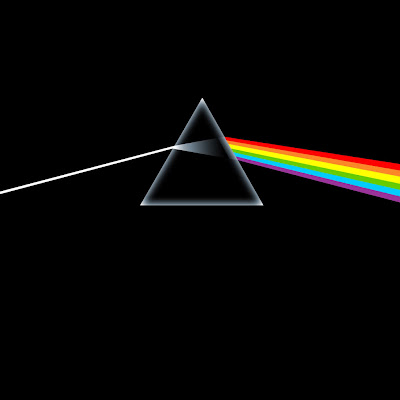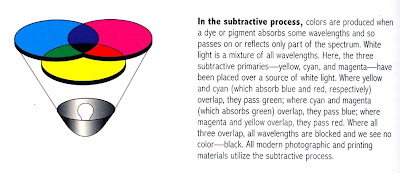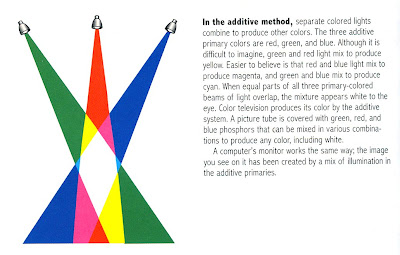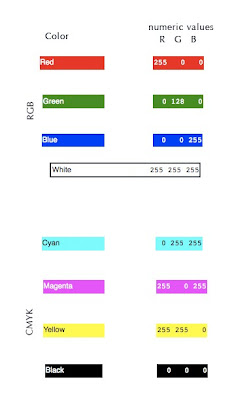
Additive (RGB): (Monitors, TV screens) White Light is produced by mixing colors.
RGB (red, green, blue): Emitted Light. Your computer screen uses RGB.
The RGB color model is an additive color model in which red, green, and blue light are added together in various ways to reproduce a broad array of colors. The name of the model comes from the initials of the three additive primary colors, red, green, and blue. The main purpose of the RGB color model is for the sensing, representation, and display of images in electronic systems, such as televisions and computers, though it has also been used in conventional photography.

Subtractive (CMYK): (Printing) Black is produced by mixing colors.
CMYK (cyan, magenta, yellow, black): Reflective light, Used for printed media.
The CMYK color model, referred to as process color or four color, is a subtractive color model, used in color printing, also used to describe the printing process itself. CMYK refers to the four inks used in most color printing: cyan, magenta, yellow, and key black.The CMYK model works by partially or entirely masking certain colors on the typically white background (that is, absorbing particular wavelengths of light). Such a model is called subtractive because inks “subtract” brightness from white.
Imagine you have 3 projectors on at the same time. One is projecting a beam of green light, one projects and beam of red light and one projects a beam of blue. When they cross and overlap, all 3 beams together become white. Just red and green make yellow. Just blue and green make cyan. Just Red and Blue make Magenta.
Color Physics: What happens when you mix RGB? (Red, Green and Blue light)
Additive vs. Subtractive Color | RGB and CMYK



Using the eye dropper tool in Photoshop, look at the Numeric RGB color values of the colors on this chart:

No comments:
Post a Comment